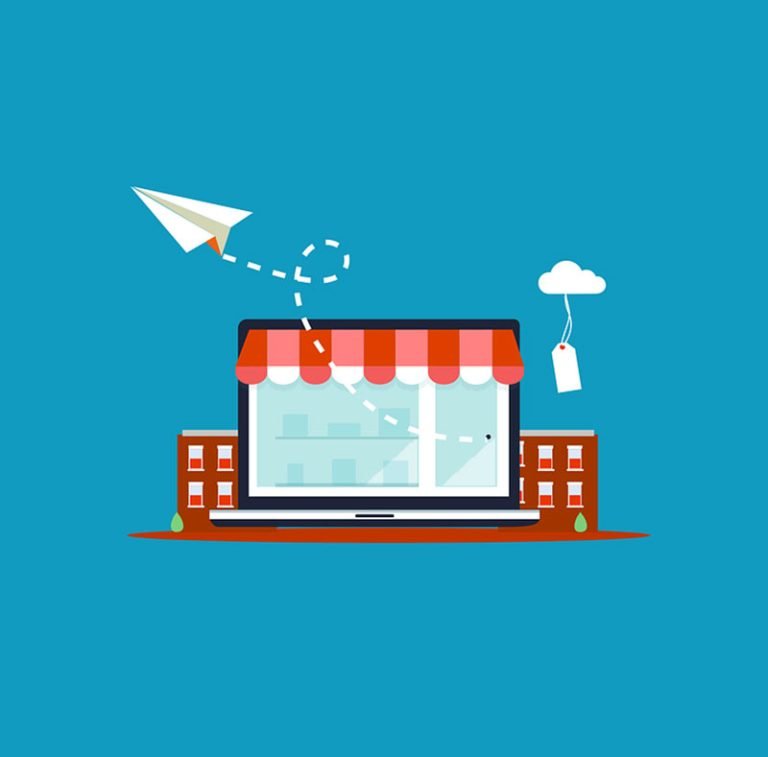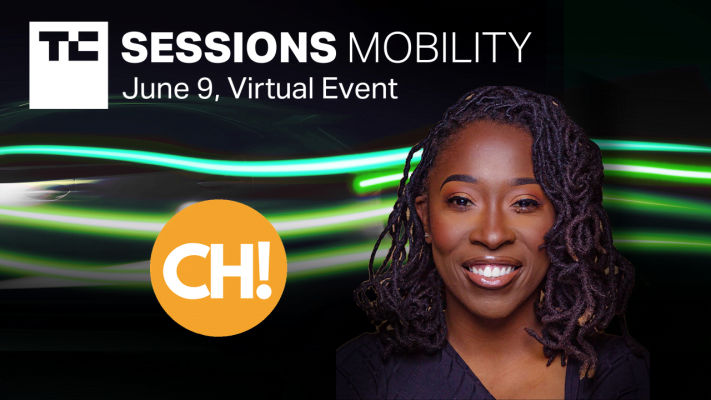PHP is a programming language that that has enjoyed wide popularity over many years. It’s a cross-platform language that’s easy to learn and use, that can be used for a wide variety of purposes, and that’s currently still used in more than 75% of sites on the Web.
There are several books available on this subject that can help you get started with PHP programming. In this article, we’ve compiled a list of some of our favorite resources.
Contents:
- What is PHP and What is it Primarily Used For?
- Who Should Learn PHP?
- Top PHP Books for Beginners
- How to Choose a PHP Book
- Taking Your PHP Skills to the Next Level
What is PHP and What is it Primarily Used For?
Table of Contents
PHP is a server-side scripting language. It can be used to create dynamic web pages, websites, blogs, and applications.
PHP was originally developed by Rasmus Lerdorf in 1994 as a subset of the Perl programming language. The project was released under the GNU General Public License (GPL) on January 1, 1995, with version 4.0 being released later that year.
PHP has become one of the most popular open-source languages for use in web development, due to its simplicity and ease of use, as well as its ability to handle large amounts of data without slowing down your website or application significantly. PHP and MySQL (the most widely used relational database management system) power a large portion of the Internet, coming together to create rich and interactive web applications.
Who Should Learn PHP?
PHP is a general-purpose programming language that can be used to create websites. It’s easy to learn, and there are many resources available online for beginners.
Anyone who wants to learn computer programming will benefit from learning PHP, because it offers an intuitive way of thinking about how computers function and what code does behind the scenes.
PHP is a great choice for building a dynamic website. It was developed with that goal in mind, and offers all the tools you’ll need to not only build a website but also take care of essential things like security, database connection, sessions, and more.
Please note that we’ll get commissions for purchases made through Amazon links in this post.
Top PHP Books for Beginners
Let’s now go through our selection of our five recommended books for learning PHP.
The Joy of PHP Programming: A Beginner’s Guide
Have you ever wanted to design your website or browser application but thought it would be too difficult or just didn’t know where to start? Have you found the amount of information on the Internet either too daunting or not geared for your skill set or worse — just plain boring? Are you interested in learning to program PHP and having some fun along the way? If so, then The Joy of PHP by Alan Forbes is the book for you!

This book is written in a conversational style and is easy to read. It doesn’t assume any prior knowledge of PHP or web development, so you can start from scratch without having to learn anything first. You’ll learn how to use the language and its most important data types and functions (strings, arrays, and so on) as well as some advanced concepts like template files and database connections.
This book covers everything you need to know about PHP programming in an easy-to-understand format that even non-techies can follow.
Murach’s PHP and MySQL
I can’t count how many PHP books I have purchased over the years trying to learn the language. Murach’s was the first book that helped me grasp the concepts and got me onto actually scripting in PHP … [It] does a better-than-ever job of delivering the skills you need to develop database-driven websites using PHP and MySQL, the way today’s top web professionals do. — Amazon review
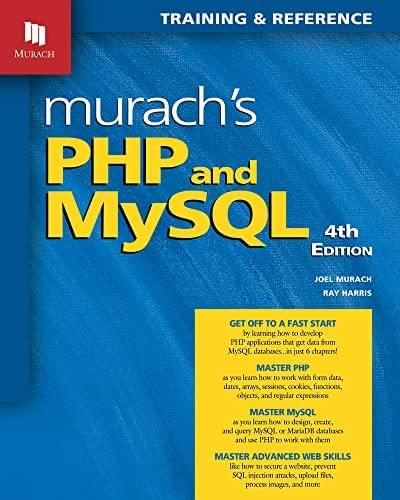
Murach’s PHP and MySQL is an excellent book for beginners. It offers a complete overview of the basics of PHP and MySQL, including how to use them together in real-world applications. It also provides useful examples that show you how to create web databases with PHP, by using libraries like MySQLi or PDO. With this book under your belt, you’ll be able to build websites with all kinds of databases and different types of web applications.
This book is written in an easy-to-understand format that can be used by anyone with basic knowledge of PHP and MySQL. It includes a lot of examples to help you understand how the language works and how it can be used in real-world applications. The book also contains a chapter on MySQLi, which offers additional functionality, making it easier for developers to work with databases.
Programming PHP: Creating Dynamic Web Pages
Why is PHP the most widely used programming language on the web? This updated edition teaches everything you need to know to create effective web applications using the latest features in PHP 7.4. You’ll start with the big picture and then dive into language syntax, programming techniques, and other details, using examples that illustrate both correct usage and common idioms.
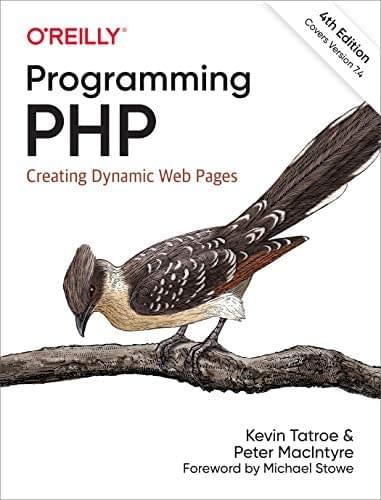
Programming PHP: Creating Dynamic Web Pages is a good book for beginners. It’s written in a clear, easy-to-read style and covers all of the basic concepts of PHP. The author also covers some more advanced topics such as debugging and security, error handling, generating dynamic images, creating PDF files, and parsing XML files. If you put this together with the basics of sessions, database connection, and utilization, you have a great resource for learning PHP.
PHP for the Web
With PHP for the World Wide Web: Visual QuickStart Guide, readers can start from the beginning to get a tour of the programming language or look up specific tasks to learn just what they need to know. This task-based visual reference guide uses step-by-step instructions and plenty of screenshots to teach beginning and intermediate users this popular open-source scripting language.
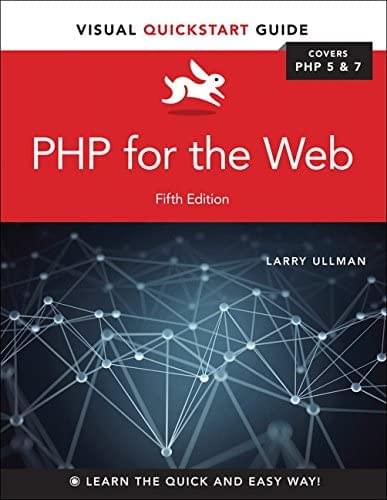
This book is for those who want to learn PHP and MySQL, and how to build dynamic web pages with them. The author, Larry Ullman, has written several other books on the subject. This one is aimed at beginners who want to get started learning about programming using PHP and MySQL (two of the main languages used in web development). It’s not intended as a full-blown reference guide, but rather as an introductory text that covers all the basics needed by any programmer who wants to use these technologies in their projects.
The book starts with an overview of what makes up a website. Then we move on to creating our content using simple examples like adding images or text boxes and then styling them using CSS, before moving onto more complex topics such as forms validation techniques which will be useful later on down the road when working with databases too. This iterative form will make you learn how PHP works in a practical, real-world type of way.
PHP: Learn PHP in One Day and Learn It Well
You no longer have to waste your time and money learning PHP from lengthy books, expensive online courses, or fragmented PHP tutorials. This book covers all the major topics in PHP and is written in a concise and to-the-point manner. In addition, you’ll be guided through a project at the end of the book where you get to apply the concepts learned and see how it all ties together.
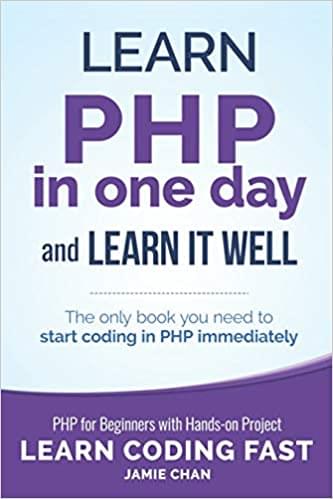
The goal of this book is to provide a clear and concise way to learn PHP. Complex examples are broken down into small, digestible chunks so you can progress fast in your PHP learning. The selection of topics goes through the essentials like how to set up a server, basic data types, and web-related topics like cookies, sessions, and security. All of this is presented with the help of carefully selected examples.
The book ends with a project where you’ll go through all of the concepts explained in the book to cement your knowledge.
This book is a great and quick way to start learning PHP for the Web concisely and practically (just don’t think you’ll learn it all in one day!). What’s more, it’s available with your SitePoint Premium subscription.
- Author: Jamie Chan
- Website: sitepoint.com
- Release Date: June 2020
PHP, MySQL & JavaScript All in One
In just a short time, you can learn how to use PHP, MySQL, and JavaScript together to create dynamic, interactive websites and applications using three leading web development technologies.
No previous programming experience is required. Using a straightforward, step-by-step approach, each lesson in this book builds on the previous ones, enabling you to learn the essentials of full-stack web application development — from HTML, CSS, and JavaScript on the front end, to PHP scripting and MySQL databases on the server.
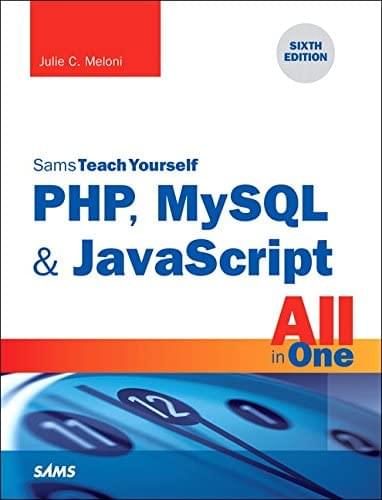
This is another great example of a book that goes step-by-step with practical, hands-on exercises on how to build web applications. This one doesn’t focus only on PHP but also introduces you to HTML, CSS, JavaScript, and MySQL to create a web application with more than just the backend components.
It slowly builds your skills, and with each chapter, you go from PHP to JavaScript to CSS to MySQL as the topics best fit. It also includes very basic things for true beginners, like database design, table relationships, normalization, and the CSS box model — which, even though covered at a basic level, are completely essential for building proper web applications.
All in all, this is an easy-to-follow guide for beginners to start building web applications.
Learning PHP, MySQL & JavaScript
Build interactive, data-driven websites with the potent combination of open source technologies and web standards, even if you have only basic HTML knowledge. With the latest edition of this popular hands-on guide, you’ll tackle dynamic web programming using the most recent versions of today’s core technologies: PHP, MySQL, JavaScript, CSS, HTML5, jQuery, and the powerful React library.
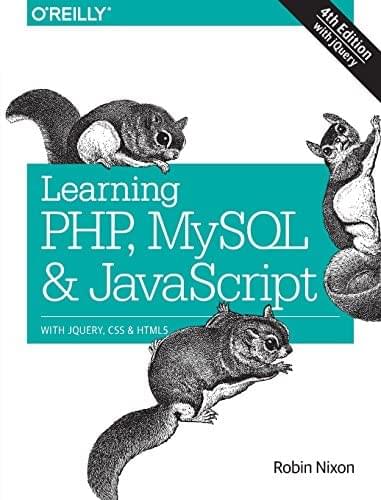
In this book, author Robin Nixon walks you through not just PHP but also all the other usual technologies such as CSS and JavaScript and adds things like Ajax calls and the React library to teach you how to build modern and robust web applications.
Just like other books on this list, this book doesn’t focus only on PHP but gives an entire overview of a web application. As such, it has less of a focus on the backend and scripting capabilities of PHP to focus more on the integration of technologies to provide an entire application.
The book explores all of these concepts while building a functional social network that’s optimized for both desktop and mobile browsers.
Just be aware that this is not a beginner’s book and won’t teach you PHP or programming from scratch.
PHP & MySQL: Novice to Ninja
PHP & MySQL: Novice to Ninja, 7th Edition is a hands-on guide to learning all the tools, principles, and techniques needed to build a professional web application using PHP & MySQL. Comprehensively updated to cover PHP 8.1 and modern best practices, this highly practical and fun book covers everything from installation to creating a complete online content management system.
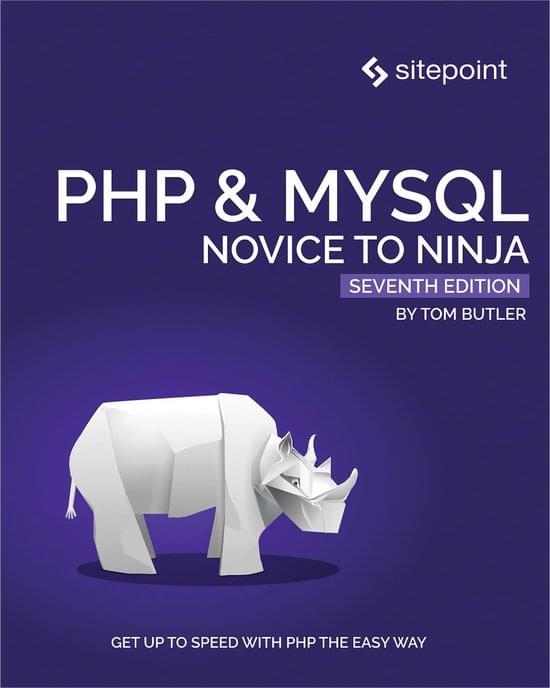
This is a great book for someone who wants to not only learn PHP but also have some knowledge on how to properly set up a PHP environment using modern tools like Docker (a great tool to have if you want to work on PHP applications for a living). This book will teach you not only how to set up your environment but also get you up and running with PHP and MySQL by implementing a content management system and then iterating on that same project using the new concepts and features you learn in the book.
The seventh edition of this book is fully written using PHP 8.1 and it showcases the latest best practices of the language.
- Author: Tom Butler
- Website: sitepoint.com
- Release Date: January 2022
How to Choose a PHP Book
As you could see from this list, there are several different types of PHP book. Some are directed to the beginner programmer who wants to focus entirely on PHP; some focus on web applications; and others are aimed at advanced programmers who already have knowledge of the language and want to dive into more advanced topics.
To choose the best book for you, you’ll first need to identify your needs.
Most of the books on this list focus on the interaction between PHP and MySQL to explain the core language and concepts of PHP and MySQL, so a good way to try what book will be the best fit for you, you might have to consult each book’s content. Some of these books are more theory heavy, like The Joy of PHP Programming, while others are centered around practical examples and projects, like PHP: Learn PHP in One Day and Learn It Well. If you want to dig deeply into PHP best practices and to learn to think like a high-level PHP programmer, consider PHP & MySQL: Novice to Ninja.
You may also want to consider a book that also goes into JavaScript and CSS for the browser interactions and general look and feel. And in this case, books like Learning PHP, MySQL & JavaScript or PHP, MySQL & JavaScript All in One should be your go-to.
Summing up, when choosing a PHP book, make sure you first identify your needs. Then you should go for the title that best suits your needs.
Taking Your PHP Skills to the Next Level
After reading one or several of these books, you might wonder what’s next. Normally, programming languages are always evolving, and PHP isn’t an exception. So, to take your skills to the next level, you might want to consider the following:
-
Learn about the new features of PHP. PHP is always evolving and adding new features and paradigms. Being up to date with the most recent changes can make a difference in your next project.
-
Learn about the best practices of PHP.
-
Learn about OOP (object-oriented programming) in PHP. OOP is not a new concept, but believe it or not, it’s still underused in many PHP projects. Knowing OOP while programming in PHP will make your solutions more robust, readable, and scalable.
Conclusion
As you can see, there are a lot of great books to choose from for PHP beginners. Whether you want to learn more about the PHP itself by reading about what makes it so special or how to use it effectively in your projects, these books have something for everyone.

